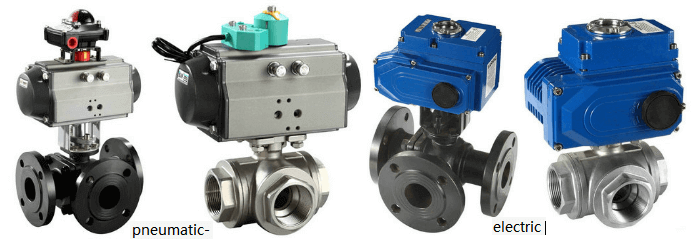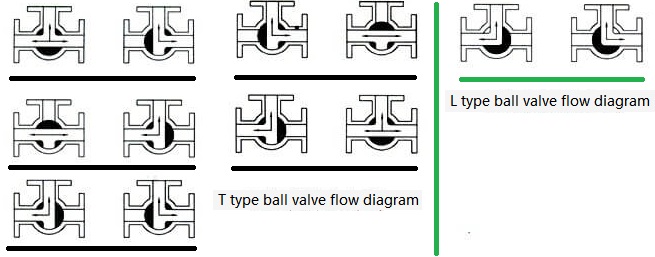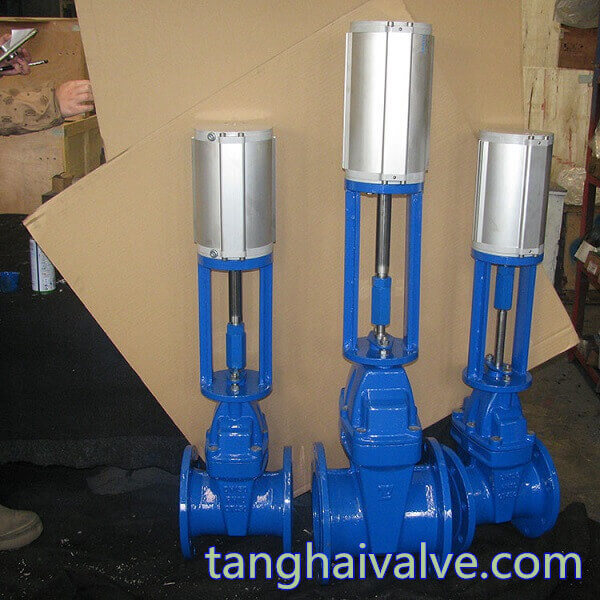Three-way ball valve T type vs L type
The difference between pneumatic three-way ball valve T type and L type
Pneumatic three-way ball valve is a new type of valve that has been widely used in recent years. It is mainly used to cut off, distribute and change the flow direction of the medium in the pipeline. According to the different internal structure, it can be divided into L type and T type, but From the appearance, there is no difference between the two! So what is the difference between the principles and applicable working conditions of the T-type and L-type pneumatic three-way ball valves? How to choose?

pneumatic-electric-three way ball valve-flange-crew-T-L-type
Pneumatic flanged three-way ball valve Pneumatic internal threaded three-way ball valve The common connection method of pneumatic three-way ball valve is flange or internal thread. Choose according to the actual working conditions of the pipeline! Then in the process of use, you should choose different structural forms according to different working conditions. From the technological point of view, the T-type ball valve can replace the L-type ball valve. The working principle diagrams of the two are as follows:
The L-type pneumatic three-way ball valve is used to switch the flow direction of the medium, which can connect two perpendicular channels (such as the L-type flow diagram). The T-type pneumatic three-way ball valve can not only switch the flow direction of the medium, but also make the three channels communicate with each other. At the same time, it can also close any channel to connect the other two channels to flexibly control the merging or splitting of the media in the pipeline.

Flow diagram-three way ball valve-T-type-L-type
The difference between T-type electric three-way ball valve and L-type electric three-way ball valve
Electric three-way ball valve is a new type of three-way port switching ball valve, which can be used to control the direction, split or merge of the three pipeline media. According to the different ball core structure, it can be divided into T-type or L-type, T-type electric The difference between the three-way ball valve and the L-type electric three-way ball valve is mainly the difference in the internal structure, and there is no difference in appearance! The T-shaped ball valve can connect three orthogonal pipelines with each other and cut off the third channel to split and merge, while the L-shaped ball valve can only connect two orthogonal pipelines, and cannot maintain the third pipeline at the same time. Connectivity only plays a role of distribution.
As can be seen from the above figure, the T-type ball valve is mainly used for the diversion or mixing of media, and the L-type ball valve is mainly used for reversing! L-type three-way ball valve is used for distribution and switching that do not require 3-way, and the operation is more convenient. There are only two valve positions, and there are positioning, and it can be turned 90 degrees without error; T-type three-way ball valve has a wide range of channels to choose from , There are many valve positions, generally there is no positioning, if you replace the L-type, it should be turned 180 degrees.
Electric flanged three-way ball valve Electric internal threaded three-way ball valve From the technological point of view, the T-type electric three-way ball valve can replace the L-type electric three-way ball valve, but the L-type ball valve cannot replace the T-type ball valve! In the process of use, different structures should be selected according to different working conditions, and the T-type ball valve can flow through but the L-type ball valve cannot.
TH Valve is a professional manufacturer of butterfly valve, gate valve, check valve, globe valve, knife gate valve, ball valve with API, JIS, DIN standard, used in Oil, Gas, Marine industry, Water supply and drainage, fire fighting, shipbuilding, water treatment and other systems, with Nominal Diameter of DN50 to DN1200, NBR/EPDM/VITON, Certificates & Approvals: DNV-GL, Lloyds, DNV, BV, API, ABS, CCS. Standards: EN 593, API609, API6D
related news /knowledge: Working principle diagram of three-way valve; What is a ball valve?; Electric ball valve principle | Electric ball valve working principle;



 © Copyright 2020 Tianjin Tanghaidongyang Valve Co., Ltd. All Rights Reserved.
© Copyright 2020 Tianjin Tanghaidongyang Valve Co., Ltd. All Rights Reserved. tanghaivalve.com
tanghaivalve.com